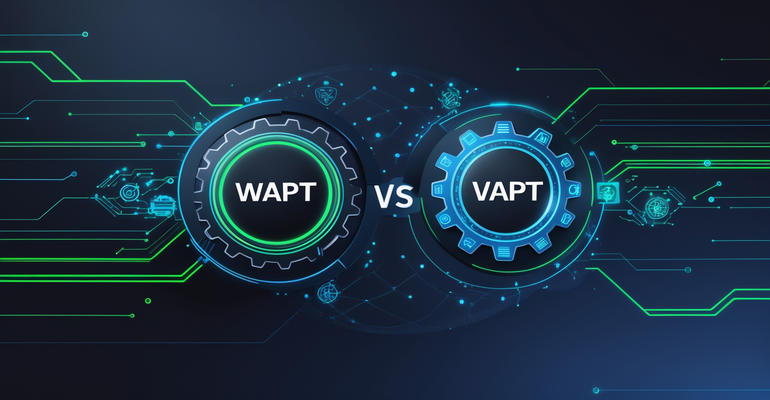
Cloud penetration testing helps identify these vulnerabilities by simulating real-world attacks, ensuring your cloud environment is secure and resilient. In this blog, we’ll cover what cloud pen testing is, how it differs from traditional methods, key focus areas, tools, challenges, and best practices to safeguard your cloud infrastructure.
With cloud adoption on the rise, securing cloud infrastructure is more critical than ever. While platforms like AWS, Azure, and GCP offer speed and scalability, they also come with unique security risks-like misconfigurations, exposed APIs, and overly permissive access controls.
What is cloud penetration testing?
Cloud Penetration Testing is an example of ethical hacking where a simulated cyber attack is executed on a cloud system’s infrastructure, its applications alongside its services with the sole purpose of identifying its weaknesses. A real world scenario is emulated with the aim of gauging the effectiveness of security measures put in place to protect cloud hosted resources. In comparison to traditional pen testing, cloud pen testing operates within a shared responsibility framework. Cloud Service Providers (CSPs) are tasked with managing and securing the infrastructure while the customer takes responsibility for the security of data, applications, and their configurations in the cloud.

How is it different from traditional pen testing?
| Aspect | Traditional pen testing | Cloud pen testing |
|---|---|---|
| Environment | On-premises infrastructure | Cloud-hosted services and virtual assets |
| Ownership | Full control over infrastructure | Shared responsibility with CSP |
| Permission | No third-party authorization needed | May require CSP approval (e.g., AWS, Azure) |
| Focus | Network, servers, applications | Cloud configurations, IAM roles, APIs, containers, serverless functions |
| Tools | Standard network scanning and exploitation tools | Cloud-native tools + traditional ones with cloud-specific configurations |
Scope of cloud pen testing
The scope of a cloud pen test may differ based on your deployment model – IaaS, PaaS or SaaS, as well as the services in use. Here’s a list of frequently added points of interest:
These objectives should be aligned with the compliance needs and business goals of the company and within the boundaries of Cloud Service Provider testing policies.
Cloud penetration testing methodology
An effective cloud penetration testing requires a well-organized and strategic approach. Each provider has a different architecture, therefore there is no predefined approach which ensures thorough security evaluation. The following are the major components of the cloud pen testing lifecycle:
1. Pre-engagement and Planning
As a starting step, this phase sets the boundaries, plans, and aims of the assessment. Unlike other categories, cloud pen testing requires explicit and legal permission from CSPs which could lead to acceptable use policy violations.
At this stage, the testers collaborate with the client to determine the type of cloud services utilized (like EC2, S3, Azure Functions, GCP Compute Engine) as well as the model types (IaaS, PaaS, SaaS) and the levels to be tested (network, application, storage, identity). These agreements also define the compliance boundaries for logging, notification, and other procedures.
2. Reconnaissance & Enumeration
In this stage, the testers begin collecting information from the cloud environment using both passive and active methods. Passive reconnaissance includes the collection of public S3 buckets, subdomains, DNS records, code on GitHub repositories, and storage that is misconfigured and exposes either code or credentials. Everything that is done by the identity is called Active Enumeration, this includes interacting with the environment which entails probing APIs, scanning virtual networks, enumerating IAM policies, and discovering services that are exposed. Tools such as CloudMapper, Prowler, and ScoutSuite are used to scan for attack surfaces as well as cloud service specific misconfigurations.
3. Vulnerability Analysis
After the enumeration phase, analyzing the exposed cloud environment for potential vulnerabilities becomes the goal. Some of these vulnerabilities include overly permissive IAM policies, security groups with loose rules, dashboards that should be private, secrets in public container images or serverless functions, and many more outdated software versions on cloud instances. Both automated and manual cloud vulnerability scanners are utilized to inspect the virtual machines, cloud storage devices, Amazon Kubernetes containers, and CI/CD pipelines. Unchecked paths for privilege escalation and over-provisioning of access controls which enable lateral movement within a cloud infrastructure are of utmost priority.
4. Exploitation
This phase entails taking advantage of some weaknesses for unauthorized access, privilege escalation, or information siphoning. Exploitation in Cloud context could be accessing an IAM role with excessive permissions and SSRF exploitation in cloud metadata services, compromising exposed APIs, or abusing misconfigured serverless functions. It’s essential to carry out exploitation in a cloud environment with care, as live cloud environments are particularly sensitive to service interruptions. Clear Business Impact without disrupting operations are often achieved with documented PoC (“Proof of Concept”) Exploits.
5. Post-Exploitation
In situations where access is achieved, the compromise’s potential is further assessed. Post-exploitation activities may include access persistence, internal resource mapping within the cloud, evidence collection (tokens/credentials), and data exfiltration path demonstration. The idea is not only to showcase an exploit but evaluate what attackers could achieve from the access—“blast radius”. This phase determines how effective the monitoring and alerting systems in the cloud are configured.
6. Reporting and Remediation
The reporting phase is the last, but it’s arguably the most important. In this phase, all the information is compiled into a report documenting the vulnerabilities found, the steps taken to exploit them, the components that were impacted, the overall risk rating, and detailed remediation recommendations. An effective report has an executive summary for the stakeholders and a more detailed technical part for the engineers.
Moreover, remediation recommendations are provided for other areas such as IAM policies, encryption, network segmentation, and active monitoring which need advanced protective measures. A preliminary follow-on verification test is typically conducted to confirm that appropriate mitigation strategies have been implemented.

Key areas to focus in cloud pen Testing
The environments of the cloud may be complex, hence, effective penetration testing must burrow through the correct layers. Some focus areas include:

Challenges and Considerations
Penetration testing in the cloud has new considerations which differ from traditional settings:
Best Practices for Secure Cloud Infrastructure
Conclusion
While migrating to the cloud, securing its functionalities and infrastructure should be approached as a business imperative rather than solely a technical necessity. Cloud Penetration Testing is crucial in finding security gaps, ensuring controls are working as intended, and improving cloud posture against actual threats.
With the right methodology, a focus on critical areas, and appropriate tools, businesses can defend themselves against cybercriminals. At StrongBox IT, we provide optimized assessments that specifically address a cloud security gap while adhering to business and regulatory frameworks.
Ready to test your cloud security? Get in touch with our experts for a comprehensive cloud penetration test and stay confidently secure in the cloud.






